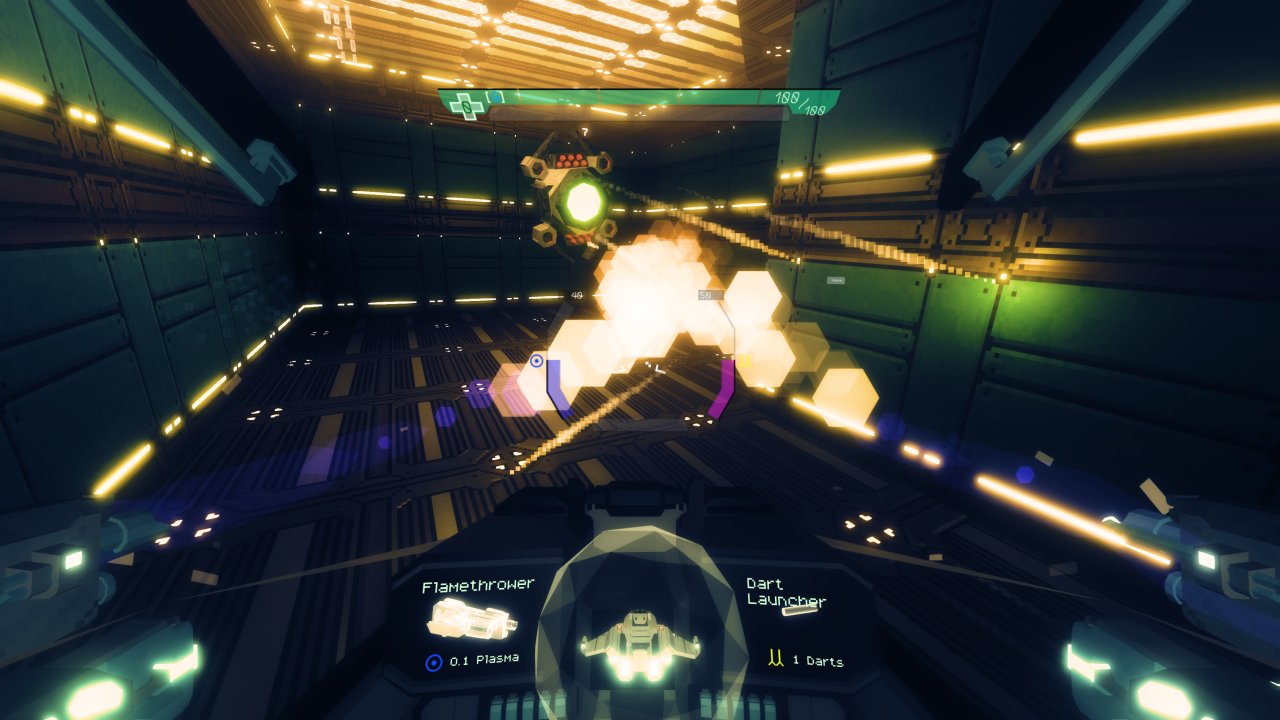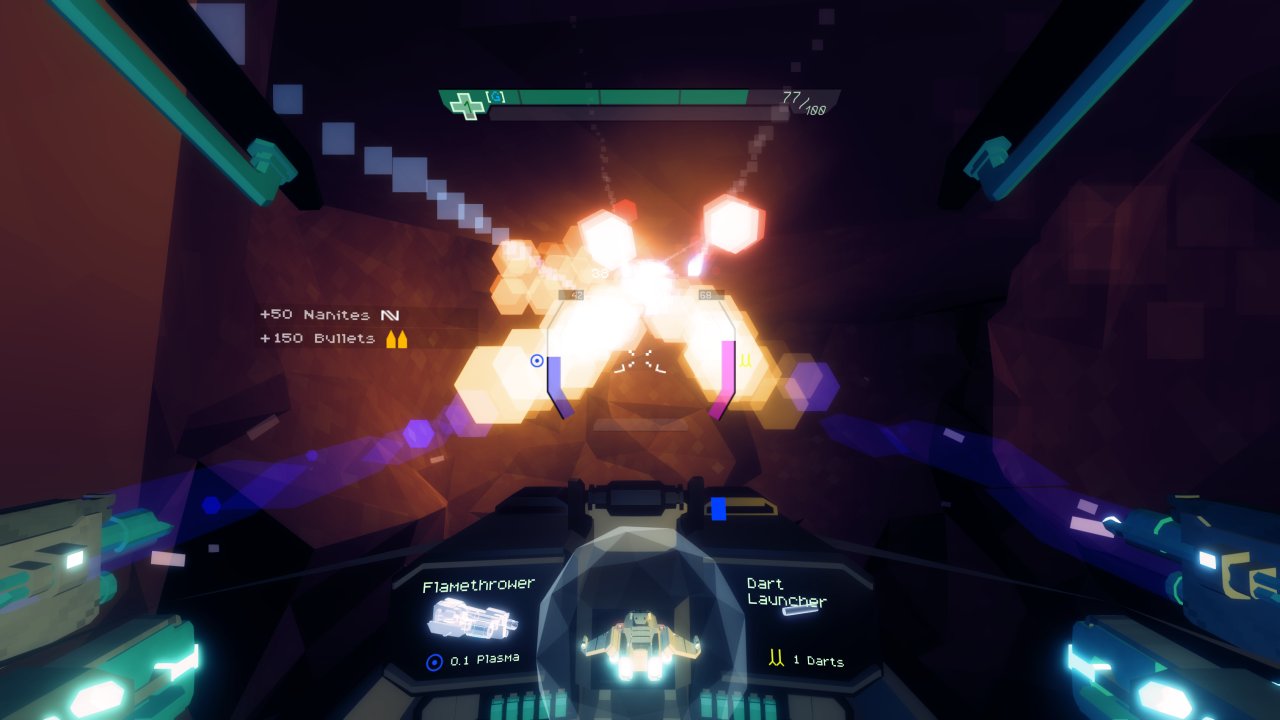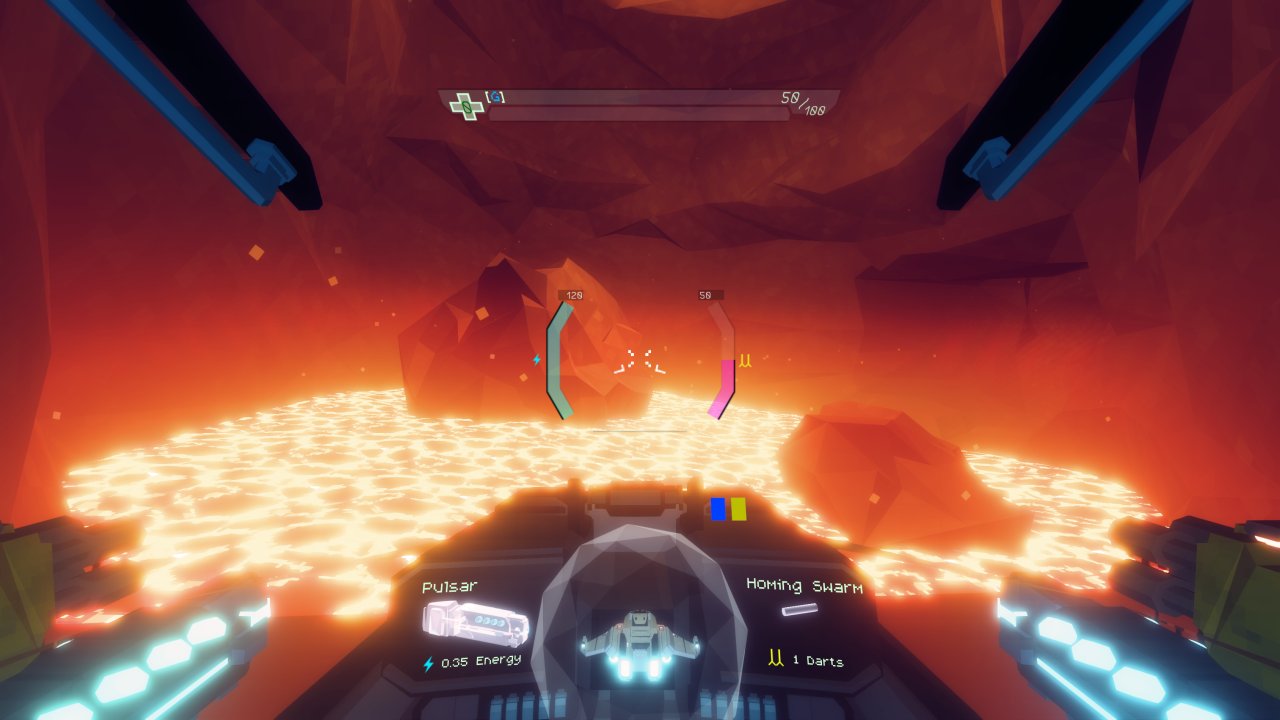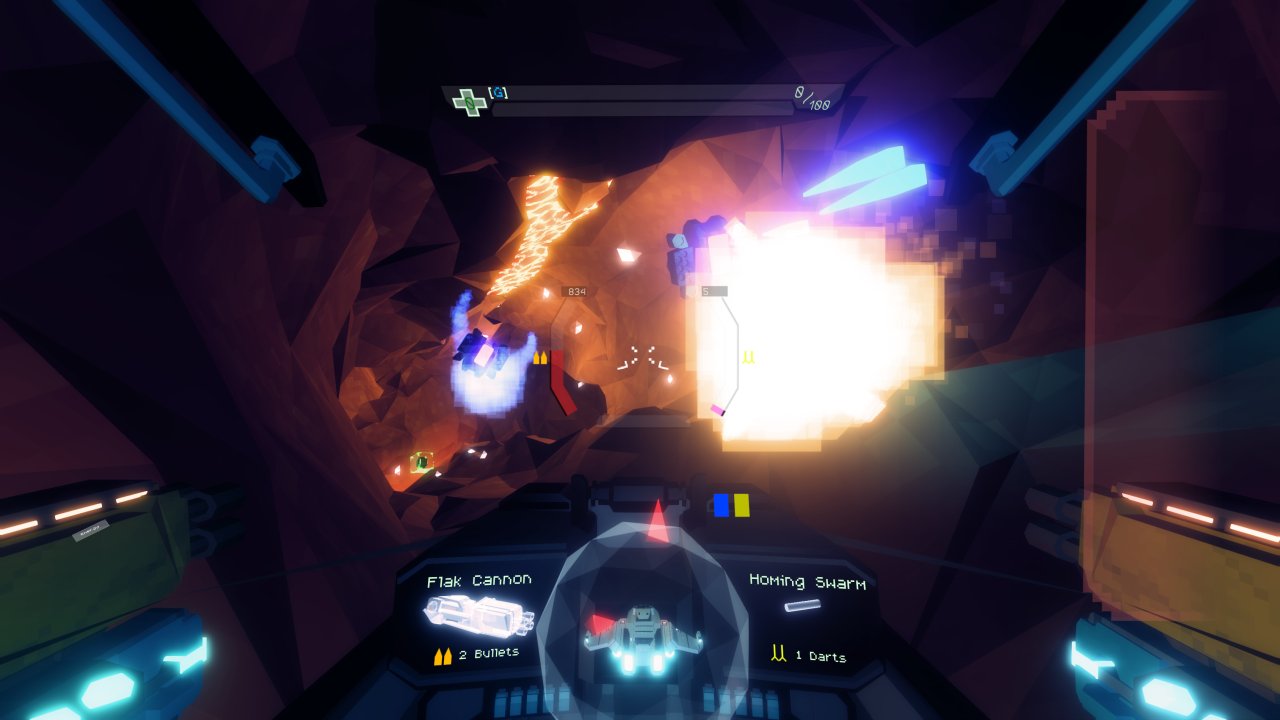Sublevel Zero Review
Six degrees of falling short
If there was ever a genre that could be called 'ahead of its time', it was the six degrees of freedom shooter. The advent of proper 3D engines, for most developers, elicited questions like “how can we have nicer texture mapping in our Doom clone?” and “how can we take advantage of verticality in our Doom clone?” and “can we maybe come up with a term for these first-person shooting games other than 'Doom clone'?” But for those that really wanted to push the boundaries of what could be done in true 3D space, the question was “what if we made a shooter where you could move vertically and change your pitch and roll and... sorry, which way is up, again?” Being able to navigate 3D spaces through every axis of movement was an interesting exploration of what could be done with spatial traversal - still one of the most important bits of any first-person shooter - but the reality was disorienting, awkward to control, and a little bit too good at making you lose your lunch. Blame it on bad design, blame it on rendering techniques, blame it on the fact that we were still working on the issues of just moving on the ground in first-person, but the fact is that 6DOF shooters were a case of running before we could crawl, which probably explains why they've been so heavily sidelined over the last decade or so. So, with the benefit of all our utopian game design knowledge, can Sublevel Zero revitalise its genre?

First things first, though: we need an excuse to navigate a cramped, labyrinthine subterranean structure with no gravity or well-defined concept of up and down. So the universe is tearing itself apart at the seams - crikey, talk about starting on some high stakes - and the scattered remains of humanity are whiling away their remaining years by either engaging in some old-fashioned in-fighting or trying to find a way to save their skins. You're a scout who has stumbled across a hidden deep-space facility stuffed with ancient technology, and as a member of the latter group it's up to you to delve all the way through this place's automated defences in the vain hope that it houses some kind of tube of cosmic superglue. Naturally, the interior of the place is a maze in constant spatial flux - that is to say, it's another roguelike with randomly-generated levels and loot - and it's divided into seven floors, despite the game's vague and often heavily-mangled definition of what side of the room we're even allowed to call 'floor'.
This is what fascinates me, as a fairly hardcore first-person shooter player. I'm used to seeing arenas in terms of walls, floors, platforms, ramps, and the numerous crisscrossing relations between them. How do I get from X to Y? What's the best part of the walkable area to attack point Z from? In Sublevel Zero, there are no floors, no walls, no platforms, only boundaries and obstacles. “How do I get from X to Y?” is still a valid question, but instead of being a question of plotting a ground route through topography, it's about assembling complex manoeuvres out of your selection of moves. Do I circle-strafe around this pillar? Do I roll ninety degrees and duck under it? Do I simply slide to one side without pivoting an inch? It's the kind of freedom of movement that comes as standard with your average space flight sim, but by setting itself in such tight, claustrophobic conditions, Sublevel Zero really highlights the subtleties of being able to move and orient yourself in literally direction you like. It's wonderfully acrobatic, not a Tribes-like or Quake-like way where you're in a constant war with gravity, friction, and your own momentum, but in an unrestrained way, where none of those things are a factor but keeping track of your own position in space most certainly is.
Is it better to have more complicated movements but less complicated restrictions? Dunno, but they both beat hiding behind a chest-high wall, so let's all just appreciate it for what it is. It takes a while to get your head around the controls sufficiently enough to float through the air as elegantly as I describe it, but I'd attribute this less to the controls themselves - which are pretty much as intuitive as they come - and more to the fact that it's been nearly a decade since I touched Descent 3. The game has a feature that'll automatically try to orient you to a nearby flat surface if you're already almost oriented to it - handy, since that means you'll move parallel to it with WSAD - but in a lot of cases, particularly in the cavern-themed floors, there's no flat surface large enough for it to work meaningfully.

What I like about Sublevel Zero is that its combat seems to have been specifically engineered to force you to get the most out of the controls. Your ship is about as durable as an overstuffed shopping bag and can only be repaired by retrieving repair kits from the wreckage of the station's own security systems, so tanking damage is really something you want to avoid at all costs. Fortunately, of the reasonably diverse range of enemies - not that the diversity is always obvious, what with so many of them being featureless floating orbs with guns glued to them - the vast majority have projectile attacks, making dodging a key component in getting out of any scrape in less than a thousand pieces. Avoiding barrages of bullets via whatever direction happens to be the most convenient kind of perfectly encapsulates what sets 6DOF shooters apart, and Sublevel Zero delights in bringing it up time and time again.
It'd be nice if it could do that without being so bloody disorienting, though. You'd think that assisting spatial awareness would be priority one for a game like this, what with the inherent difficulty of performing complex transformation matrix operations in your head, but Sublevel Zero seems to take a strange pleasure in maximising the 'cat in a tumble-dryer' effect you get from turning end over end in three axes at once. Now, to be fair I never actually found myself reaching for the travel sickness pills - which ought to warrant some kind of medallion, given Descent's reputation - but on countless occasions I found myself the wrong way up, with no idea where I was being shot from, wondering where my life went so very wrong. There's no compass, no minimap, no directional damage indicator, and granted, these things are tricky to do in 3D in such a way that they communicate meaningful information, but they'd be infinitely more useful than the rolly-ball mouse-thing that you get in the cockpit instead. Your chunky obtrusive HUD and finite turn rate - meaning that you can't just whip around instantly like a Quake III player hooked up to a number of experimental adrenaline drips - tend to make it difficult to quickly take stock of the immediate situation, and to top it all off, a lot of rooms are symmetrical or devoid of meaningful landmarks, meaning that you need to stop at the end of a lot of chaotic fights to make sure you aren't about to accidentally backtrack. The product of all this is a game where your ability to move through space vastly outstrips your ability to visualise it, and that spells trouble.
Then there's the level design. One thing that's gunned down a lot of roguelike first-person shooters in the past is a failure to recognise that combat can only be as interesting as the structure of the levels it takes place in, which is why Tower of Guns, a veritable wonderland of verticality, moving platforms and environmental hazards, is more fun than Heavy Bullets, which consists of a series of mazes. Sublevel Zero hops over this hurdle, but doesn't quite make it without a bruised shin or two. Level generation is your standard 'snap pre-assembled rooms together' affair, and while the problems of the last paragraph can make some of the rooms tricky to find the exit of without stopping every five seconds to check the map, the end result does a bang-up job of creating the effect of a contorted, twisting facility built by people who had heard of gravity but never personally saw what all the fuss was about.

Most of the pre-assembled rooms are either self-contained arenas or corridors, often joined together with Metroid-Prime-y doors, and to be honest this move hurts Sublevel Zero a lot. Chopping up the level like this turns the flow of the combat into a series of discrete encounters, each more or less confined to a single room, so whenever you start a new game and shuffle them all around, all that really happens is that the order of the encounters changes. Yes, yes, you can put different enemies in them, but at the end of the day you're still swooping around the exact same environment shooting at a lot of floating orbs, which needless to say gets tiresome pretty fast. And can we please put a lid on the non-linearity? Coming up against a dead-end and having to backtrack through five or six empty rooms is bad enough in, say, The Binding of Isaac, but when working your way back through those rooms involves a lot of needless navigation, reorientation and map-reading, it's enough to make you keel over on the dashboard and drift into a pillar.
But even if Sublevel Zero can't offer all that much variety in its challenges, perhaps it can mix things up through the equipment it puts in your hands. Weapons drop randomly from enemies and chests alike, range from flamethrowers to railguns, and to the game's credit, all feel distinct enough to change how you play, which is really the most important thing here. On top of that you have modifiers like 'brutal' or 'timid' or 'razor' which alter weapons' behaviour, and even a rudimentary crafting system for making bigger, nastier guns. On paper this is all very well and good, but you've probably already guessed that I'm desperately trying to keep a tarpaulin covering the big picture here. Weapon modifiers, though probably technically capable of multiplying the number of weapons in the game tenfold, turn out to be stat tweaks of such insignificance that you could safely ignore them completely. Before long you'll be intimately familiar with every dropped weapon, and while the crafting system definitely opens up more options, it has completely the opposite effect to the one you want, since you'll end up converging on the same few higher-tier weapons time and time again rather than branching out. Maybe I haven't died enough times to unlock some hidden landslide of blueprints - yep, another roguelike that gates your progress with unlockables, nice one - but the vast majority of combinations do nothing at all.
And that's kind of the big problem with Sublevel Zero: all the barrel-rolling, corkscrewing, backflipping action in the world can't really compensate for the fact that it's a painfully undernourished roguelike. It has the difficulty curve down, and manages to pull it off without feeling blisteringly unfair, but it's the latest in a long line of contenders that fail to recognise that all the procedural generation in the world is meaningless if it doesn't actually markedly change the overall experience. I haven't even touched on the selection of upgrades you get to choose from between floors, mostly because they hardly seem worth mentioning; they're all barely-significant things like “regenerate a small amount of bullets” or “nanite pickups are slightly more valuable”. Maybe it seems petulant to yell “more!” like a spoiled brat at a game that was probably already a monolithic effort for the two or three people involved in it - it's clear that it's been polished to hell and back - but in light of its discrete level generation, meaningless modifiers and convergent crafting system, that's exactly what Sublevel Zero needs: more.

Whether or not what Sublevel Zero currently does have is 'worth it' is a tricky question. It's still a perfectly agreeable, polished, tightly-controlled 6DOF shooter, if a little plagued by minor annoyances, and depending on how much you dig its acrobatics - or how much tolerance you have for playing the same game over and over with some of the rooms shuffled around - its raw combat mechanics could swing it all by themselves. It's not so much a bad game as a pretty okay game that outstays its welcome after the first hour, and like a pushover host, I just can't convince myself to tell it to sod off. But hey, if you've been waiting fifteen years or so for a 6DOF shooter like this to grace your doorstep, maybe you'd be happier to let it stay for tea.
 Comments
Comments










